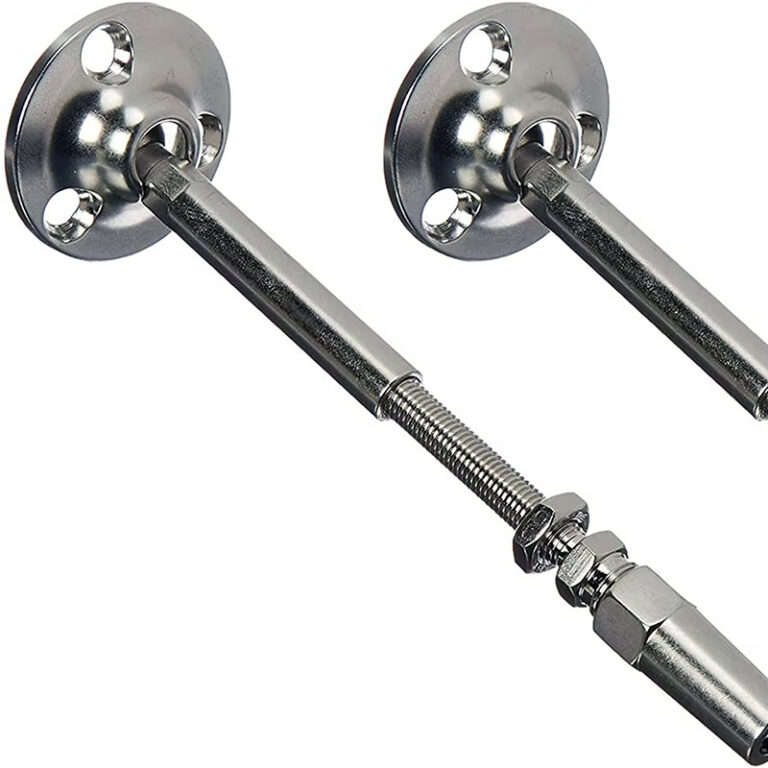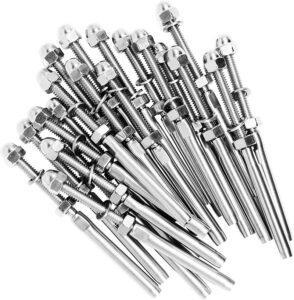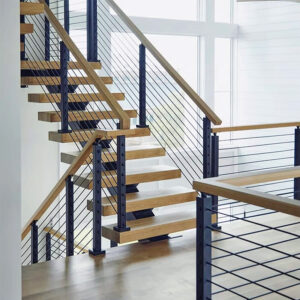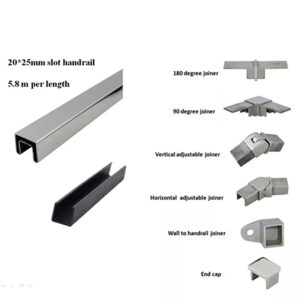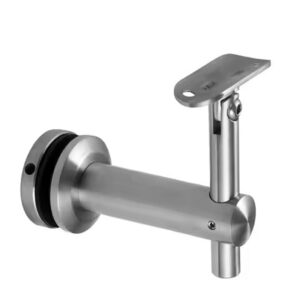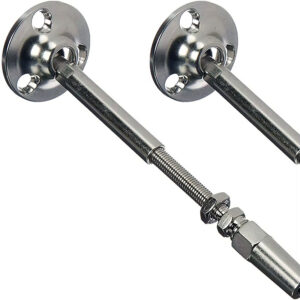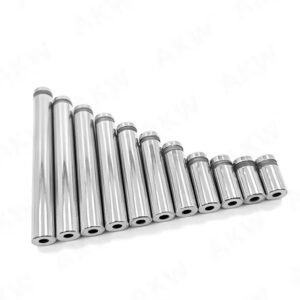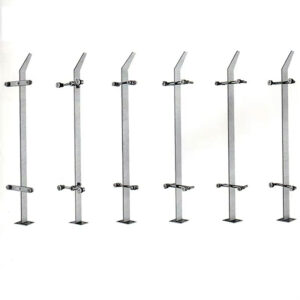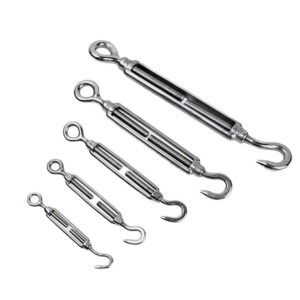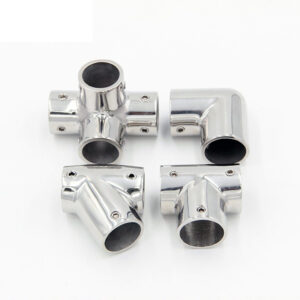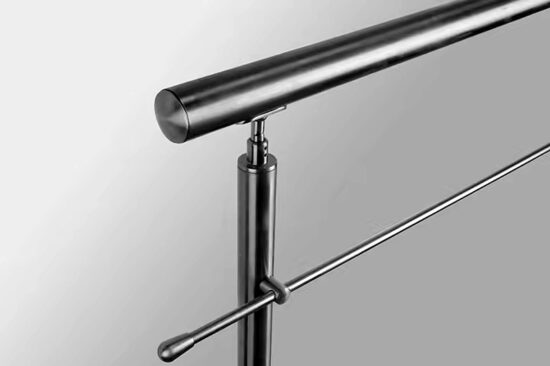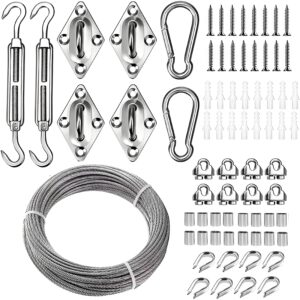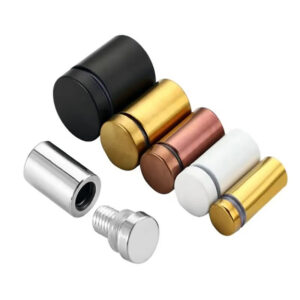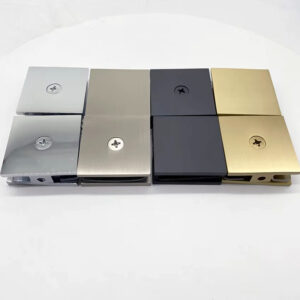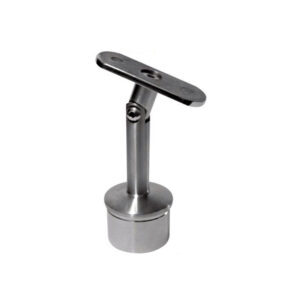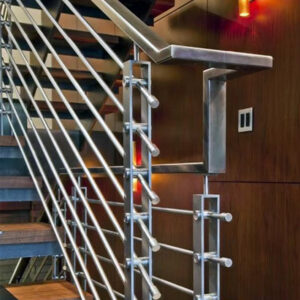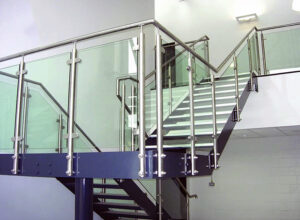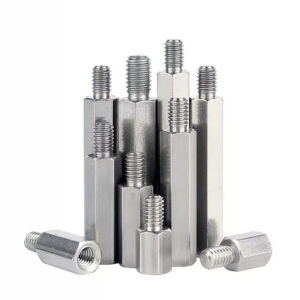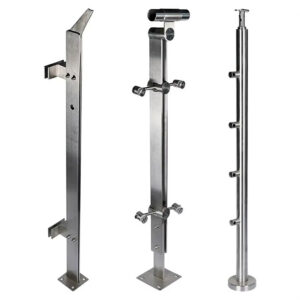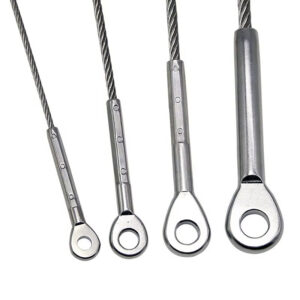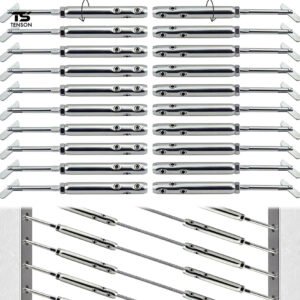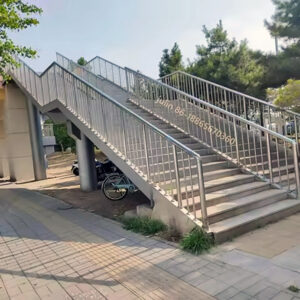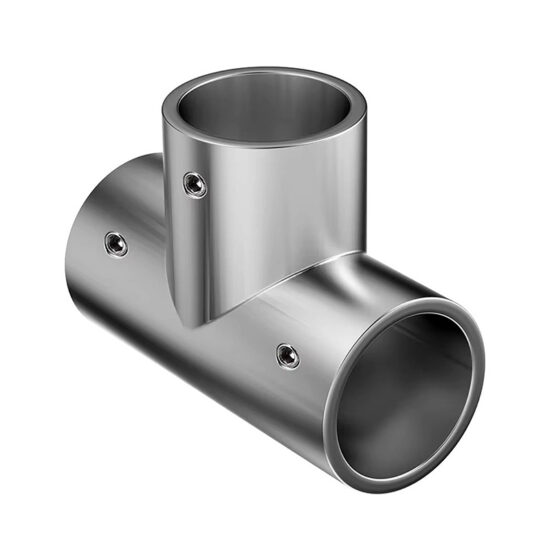After 23 years in the railing hardware business, we’ve seen contractors struggle with the same problem: cable railing systems that look simple on paper but create headaches in the field. Traditional swaged assemblies require specialized crimping tools, precise measurements, and often mean starting over when you’re off by even a quarter inch. Swageless cable assemblies eliminate these pain points with field-adjustable systems that let you cut, fit, and tension cables on-site without crimping equipment or sending assemblies back for rework.
How Swageless Cable Assemblies Actually Work
The Mechanical Advantage
Swageless cable assemblies use mechanical compression fittings instead of crimped connections. The cable threading system allows field adjustment and eliminates the precision measurement requirements that slow down traditional installations. Here’s what makes them work:
Three-Piece Design: Body, cone, and compression nut create the connection through mechanical pressure rather than permanent crimping. This means contractors can adjust cable length in the field and achieve proper tension without specialized tools.
316L Stainless Construction: Marine-grade materials handle coastal environments and commercial applications where 304 stainless falls short. The precision manufacturing ensures consistent thread engagement and reliable compression across thousands of cycles.
Field Tensioning Capability: Unlike pre-swaged assemblies, swageless systems allow tension adjustment after installation. This solves the common problem of cables stretching during initial loading or requiring re-tensioning during routine maintenance.
Installation Reality Check
Traditional swaged cable installations typically require:
- Precise pre-measurement (often impossible in field conditions)
- Specialized crimping equipment ($2,000-5,000 investment)
- Trained operators for consistent crimp quality
- Rework when measurements are incorrect
Swageless cable fabrication eliminates these requirements. Contractors report 40-60% faster installation times and virtually zero rework due to measurement errors.
▶ Get Technical Specifications ◀
Technical Specifications That Matter
Cable and Fitting Compatibility
| Cable Diameter | Breaking Strength | Safe Working Load | Thread Size | Fitting Length |
|---|---|---|---|---|
| 1/8″ (3.2mm) | 2,000 lbs | 400 lbs | 10-32 | 1.5″ |
| 3/16″ (4.8mm) | 4,200 lbs | 840 lbs | 1/4″-28 | 1.75″ |
| 1/4″ (6.4mm) | 7,000 lbs | 1,400 lbs | 5/16″-24 | 2.0″ |
Material Performance Data
| Grade | Tensile Strength | Corrosion Resistance | Typical Applications | Cost Factor |
|---|---|---|---|---|
| 304 Stainless | 32,000 psi | Interior/Light Commercial | Residential, Office Buildings | 1.0x |
| 316 Stainless | 35,000 psi | Coastal/Industrial | Marine, Chemical Plants | 1.3x |
| 316L Stainless | 35,000 psi | Superior Coastal | High-End Marine, Coastal Commercial | 1.4x |
The 316L material upgrade pays for itself in coastal applications where 304 stainless requires replacement within 5-7 years. Commercial swageless cable components using 316L typically provide 15-20 year service life in marine environments.
Real Projects, Proven Performance
Commercial Office Complex – Downtown Seattle
Challenge: 47-story building required cable railings for exterior terraces, interior atriums, and stairwells. Traditional swaged systems would require extensive pre-fabrication and multiple site visits for tensioning adjustments.
Solution: Marine grade swageless systems allowed installation teams to run cables continuously and adjust tension as building settled during first year. Custom swageless manufacturing provided special fittings for curved applications in the atrium.
Results: Installation completed 3 weeks ahead of schedule. Zero callbacks for tension adjustments during 18-month warranty period. Total project savings: $47,000 in labor and rework avoidance.
Coastal Resort Development – Outer Banks, NC
Project Scope: 340 residential units plus common areas, all requiring cable railings rated for 150+ mph wind loads in salt-air environment.
Technical Requirements: All systems specified 316L stainless with precision swageless hardware rated for coastal exposure. Custom swageless manufacturing provided non-standard thread patterns for architectural compatibility.
Performance Data: After 4 years of service, routine inspection showed zero corrosion on fittings and less than 2% tension loss across all assemblies. Maintenance costs 67% lower than comparable projects using 304 stainless components.
Industrial Facility – Chemical Processing Plant
Application: Elevated walkways and platforms requiring frequent cable replacement due to process exposure. Traditional systems required facility shutdown for cable change-outs.
Swageless Advantage: Field-adjustable systems allowed maintenance teams to replace individual cables without removing entire assemblies. Hot-swappable design reduced maintenance windows from 4 hours to 30 minutes.
Cost Impact: Annual maintenance costs reduced by $23,000. Safety compliance improved due to faster repair capability.
▶ Discuss Your Project Requirements ◀
Installation and Engineering Support
What Makes Installation Actually Work
Standard Tool Requirements: Swageless assemblies require only basic hand tools—no hydraulic crimpers or specialized equipment. Most installations use standard wrenches and cable cutters already in contractor toolkits.
Field Adjustment Process:
- Cut cable to approximate length (oversize by 2-3 inches)
- Thread through posts and intermediate supports
- Install swageless fittings finger-tight
- Apply tension and tighten to specification
- Trim excess cable after final tensioning
Quality Control Advantage: Mechanical connections provide visual verification of proper assembly. Unlike crimped fittings where failure occurs internally, swageless systems show engagement problems immediately.
Engineering Support That Delivers
Our 23 years of manufacturing experience translates into practical installation support:
Load Calculations: We provide project-specific tension calculations based on span length, wind loads, and safety factors. No guesswork on proper cable spacing or post sizing.
Custom Solutions: When standard components don’t fit, our ODM capabilities deliver engineered solutions. Recent custom work includes angled fittings for curved designs and extended-length assemblies for architectural applications.
Code Compliance: All systems meet IBC 2021 requirements for structural loads and cable spacing. Documentation package includes engineer-sealed calculations for permit applications.
▶ Connect with Our Engineers ◀
Frequently Asked Questions
Q: How do swageless assemblies compare to traditional swaged systems for tensile strength?
A: Properly installed swageless fittings achieve 80-85% of cable breaking strength, compared to 90-95% for crimped connections. In practical applications, this difference doesn’t affect performance since safety factors account for much higher margins. The field adjustability advantage typically outweighs the small strength reduction.
Q: What’s the realistic installation time difference for typical projects?
A: Contractors report 40-60% faster installation with swageless systems. A 100-linear-foot cable railing project that takes 12 hours with traditional swaged cables typically completes in 6-8 hours with swageless assemblies. The time savings come from eliminating rework and reducing precision measurement requirements.
Q: Can swageless fittings be reused if cables need replacement?
A: Yes, with limitations. Fittings can be reused 2-3 times if threads remain undamaged and compression surfaces show no deformation. This reusability advantage helps with maintenance budgets and reduces long-term ownership costs.
Q: How do I specify the right stainless grade for different environments?
A: 304 stainless works for interior applications and light commercial use. 316 stainless handles most outdoor applications and industrial environments. 316L provides superior corrosion resistance for coastal applications within 5 miles of saltwater or high-chemical-exposure industrial settings.
Q: What inventory strategy works best for distributors carrying swageless components?
A: Stock standard cable diameters (1/8″, 3/16″, 1/4″) in bulk cable plus matching swageless fittings. This approach reduces inventory investment while providing field-cuttable solutions for any project length. Custom swageless manufacturing handles non-standard requirements with 2-3 week lead times.
Q: Are there applications where traditional swaged assemblies still make more sense?
A: High-vibration environments like bridges or heavy industrial equipment may benefit from the slightly higher strength of crimped connections. Projects requiring maximum tensile strength from minimum cable diameter also favor swaged assemblies. For most commercial and residential applications, swageless advantages outweigh these considerations.
Competitive Analysis: Making the Right Choice
Swageless vs Traditional Swaged Systems
| Factor | Swageless Assemblies | Traditional Swaged | Impact on Project |
|---|---|---|---|
| Installation Speed | 40-60% faster | Baseline | Reduced labor costs |
| Field Adjustability | Full adjustment capability | None after crimping | Zero rework |
| Tool Requirements | Hand tools only | $2K-5K crimping equipment | Lower barrier to entry |
| Tensile Strength | 80-85% of cable strength | 90-95% of cable strength | Negligible for most applications |
| Maintenance | Field serviceable | Complete replacement | Lower lifetime costs |
When Each System Works Best
Choose Swageless When:
- Field conditions make precise pre-measurement difficult
- Project requires frequent tension adjustment or cable replacement
- Installation crew lacks specialized crimping equipment
- Budget prioritizes installation efficiency over maximum strength
Consider Traditional Swaged When:
- Maximum tensile strength required from minimum cable diameter
- High-vibration environment needs strongest possible connection
- Large volume production allows pre-fabrication advantages
- Specialized crimping equipment already available
Esang Metal has manufactured both systems for 23 years, giving us objective perspective on where each solution provides the best value. Our custom swageless manufacturing capabilities often provide hybrid solutions that capture advantages of both approaches.
▶ Get Project-Specific Recommendations ◀
The Bottom Line on Swageless Cable Assemblies
Swageless cable assemblies solve real installation problems that cost contractors time and money. After two decades of manufacturing precision swageless hardware, we’ve seen the technology mature from specialty application to mainstream solution. The field adjustability advantage, combined with standard tool requirements, makes these systems the practical choice for most commercial swageless cable components applications.
The key is matching system capabilities to project requirements. Our engineering team helps specify the right combination of cable grade, fitting materials, and installation approach based on actual service conditions and budget constraints. Whether you’re dealing with coastal corrosion, tight installation schedules, or maintenance access limitations, there’s likely a swageless solution that improves on traditional approaches.
